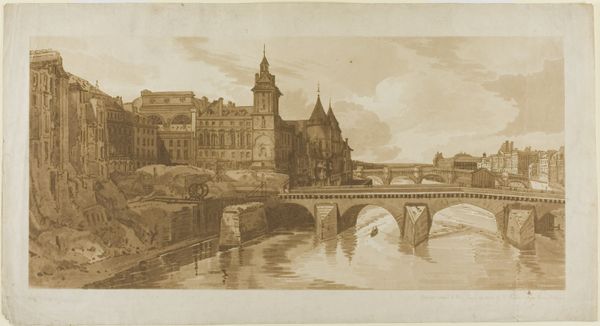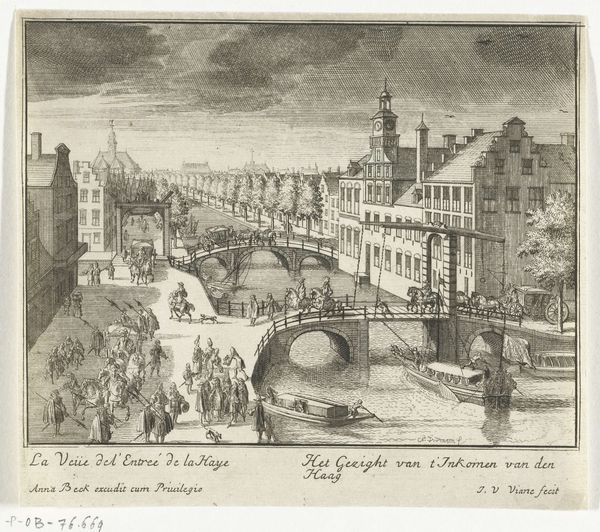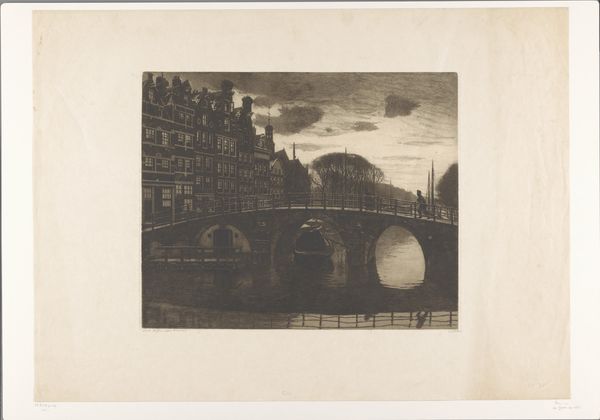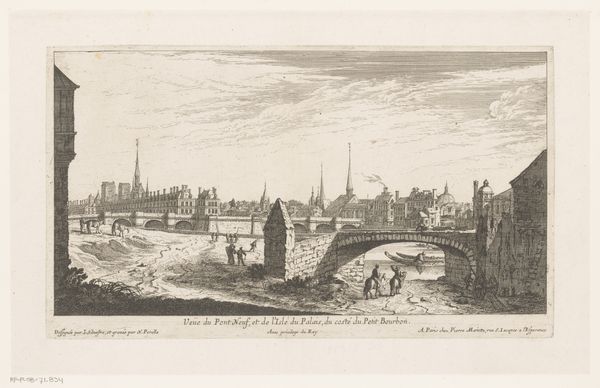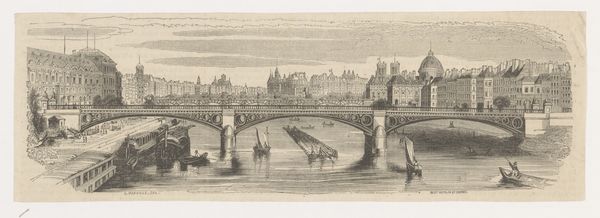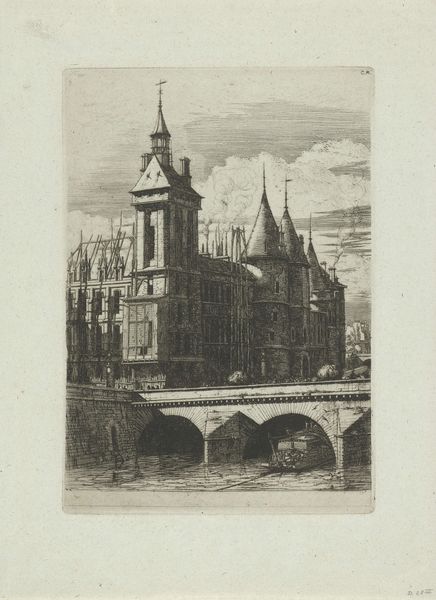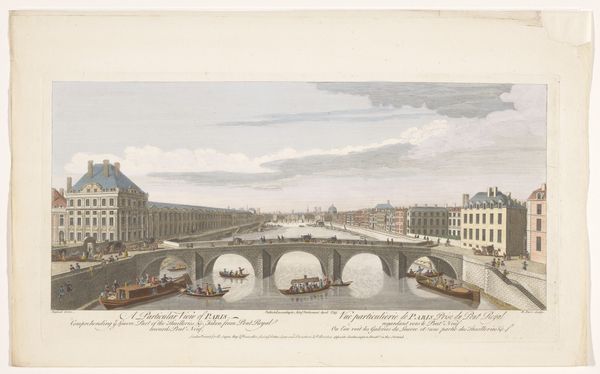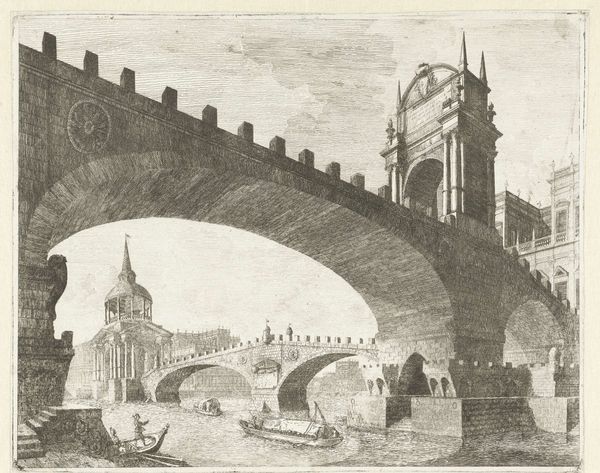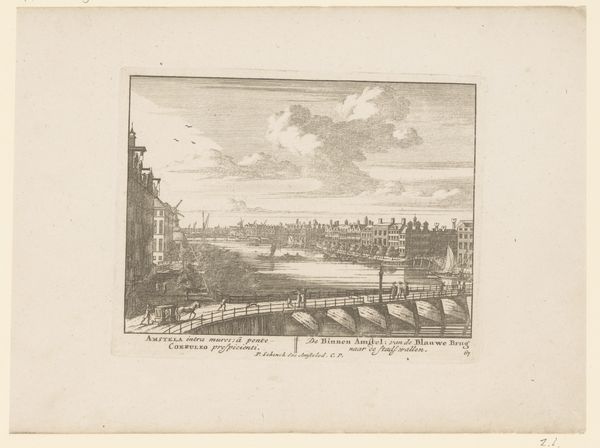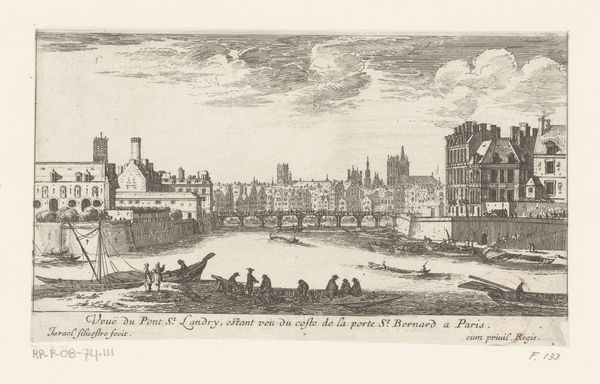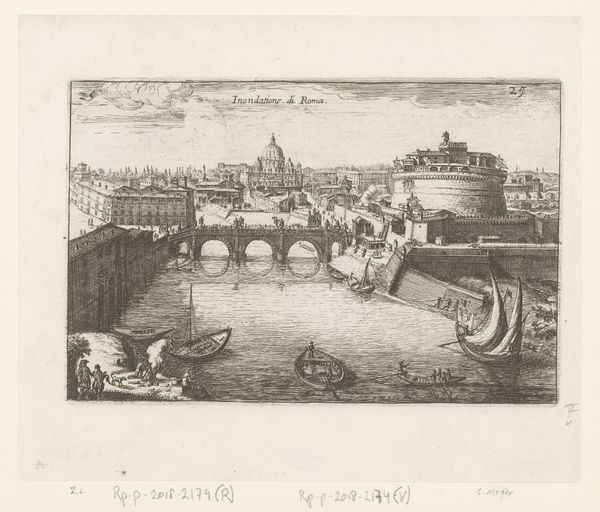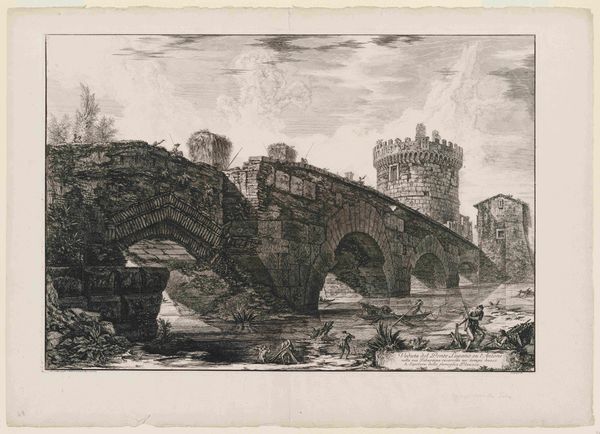
Gezicht op de Pont au Change over de Seine in Parijs, met links de rechtbank en Place de l'Horloge 1841 - 1874
0:00
0:00
Dimensions: height 152 mm, width 193 mm
Copyright: Rijks Museum: Open Domain
Curator: This is Léopold Flameng’s “Gezicht op de Pont au Change over de Seine in Parijs, met links de rechtbank en Place de l'Horloge,” or “View of the Pont au Change over the Seine in Paris, with the courthouse and Place de l'Horloge on the left.” It’s an etching, created sometime between 1841 and 1874. Editor: My first impression is that it's a study in contrasts, this somber architectural scene, and the lively Seine. The textures are just lovely, particularly how he renders the stone and water. Curator: It's interesting you say that. Romanticism was still quite prominent at that time. Artists, writers, intellectuals reflecting on the implications of the Enlightenment, or its failings even. Flameng made this image during an important transformation period in French urbanism, which impacted everyday life. Editor: I see what you mean about the Romantic elements now, in that wistful sense of a city growing and evolving. What I appreciate are the precise linear details against the softer washes of tone and the use of the medium itself. Curator: And the printmaking itself contributes to our understanding of the burgeoning middle classes, of how cities become characters unto themselves. Paris here is at the cusp of change, where ideas about how society itself might develop were taking hold. Note, for example, how figures traverse the bridge – crossing the bridge means embracing the transformations brought on by commerce and increased accessibility within the city itself. Editor: The bridge becomes more than just a static form but this sort of vessel for movement and progress you’re describing. I keep coming back to the water, that almost palpable stillness. It really grounds all this activity above. Curator: Absolutely, it serves as this perfect visual anchor. I suppose one thing we should note is how Flameng uses linear perspective to organize space. It conveys the social and spatial organization of Paris, which for ordinary citizens becomes something newly experientable. Editor: A lot of attention on geometry too. You are guiding the eye along a rational path from one building to the next! It highlights, as well, how the buildings themselves function as part of the infrastructure, the court sitting proudly next to the Pont au Change, for instance. Curator: Indeed, capturing the interplay between commerce and the institutional buildings nearby. You know, prints like this were relatively affordable…a view into Parisian life available for all to enjoy. Editor: I can just get lost in all this hatching! Okay, that’s really lovely work—I’ve learned a lot today. Curator: As have I. Thanks!
Comments
No comments
Be the first to comment and join the conversation on the ultimate creative platform.
